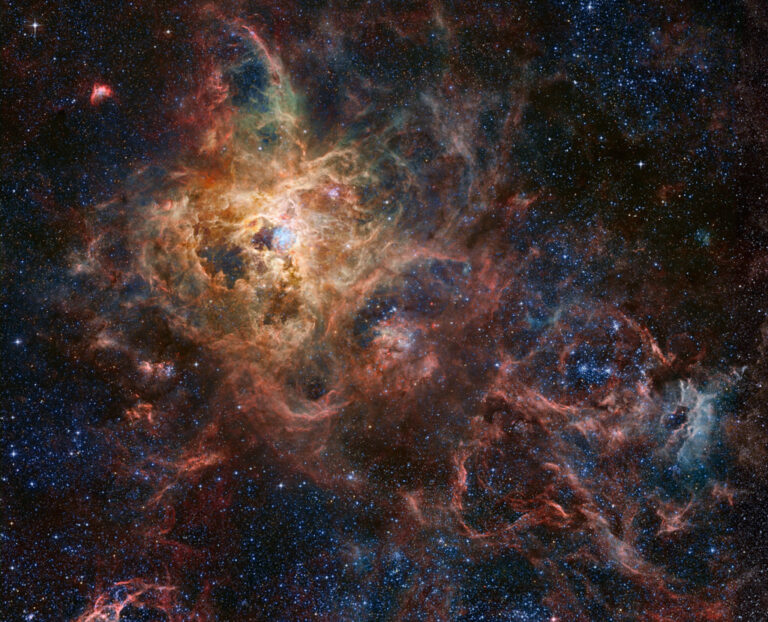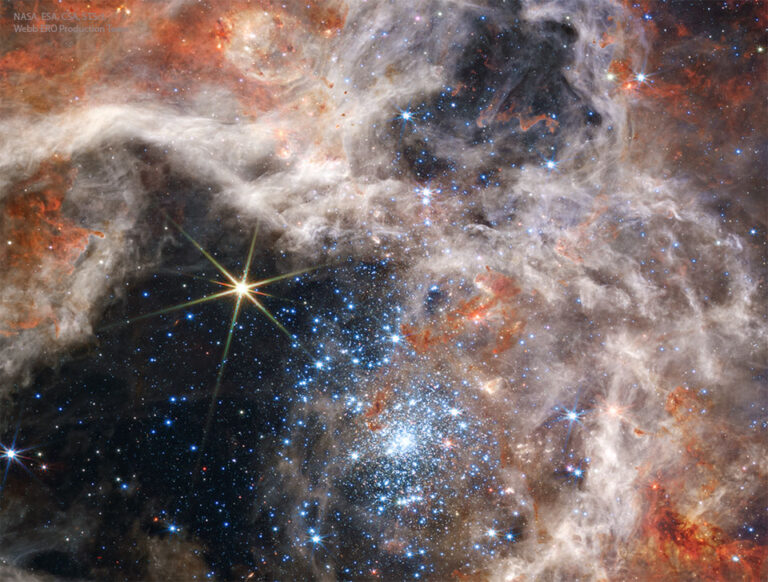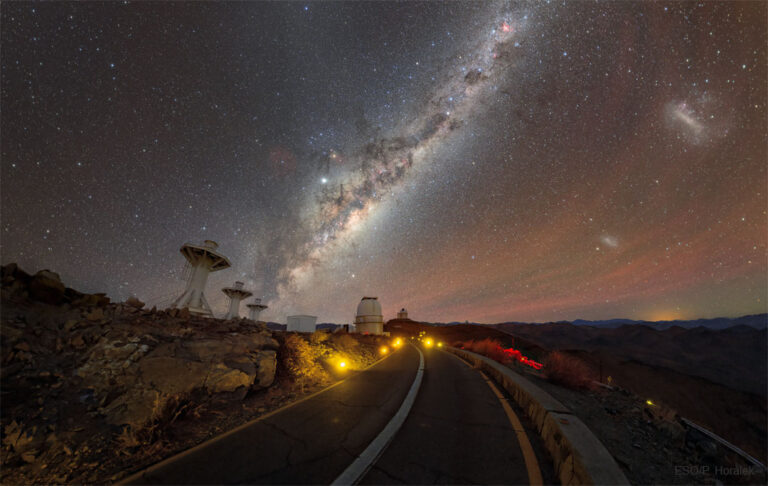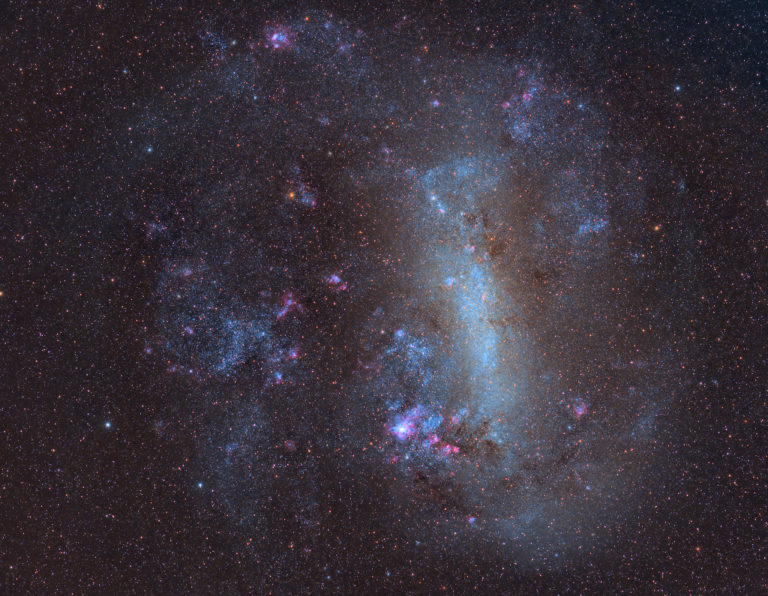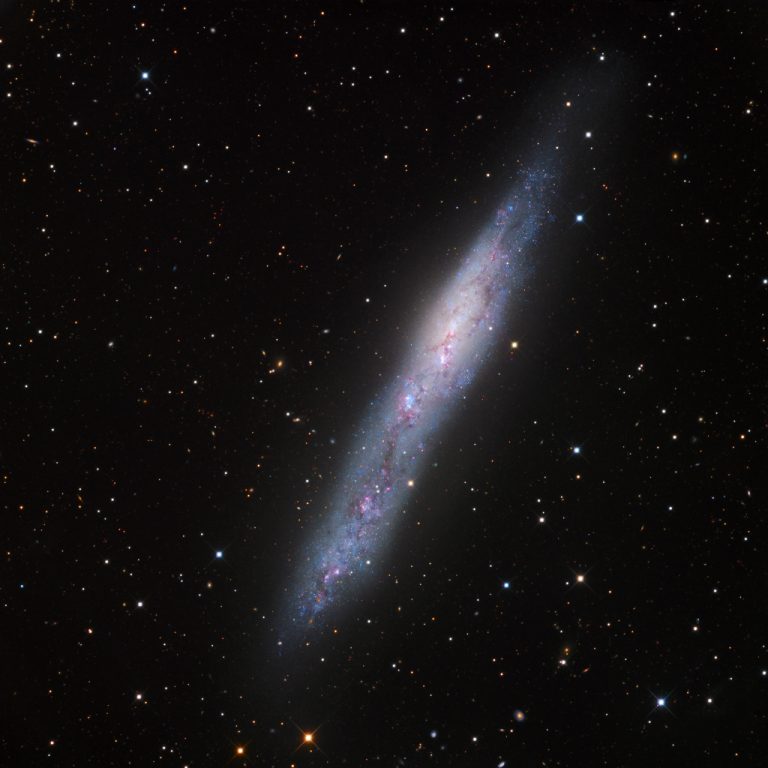蜘蛛星云的国度
2022年9月16日 The Tarantula Zone Image Credit & Copyright: >Processing – Robert Gendler, Roberto Colombari Data – Hubble Tarantula Treasury, European Southern Observatory, James Webb Space Telescope, Amateur Sources Explanation: The Tarantula Nebula, also known as 30 Doradus, is more than a thousand light-years in diameter, a giant star forming region within nearby satellite galaxy the Large Magellanic Cloud. About 180 thousand light-years away, it’s the largest, most violent star forming region known in the whole Local Group of galaxies. The cosmic arachnid sprawls across this magnificent view, an assembly of image data from large space- and ground-based telescopes. Within the Tarantula (NGC 2070), intense radiation, stellar winds, and supernova shocks from the central young cluster of massive stars cataloged as R136 energize the nebular glow…

